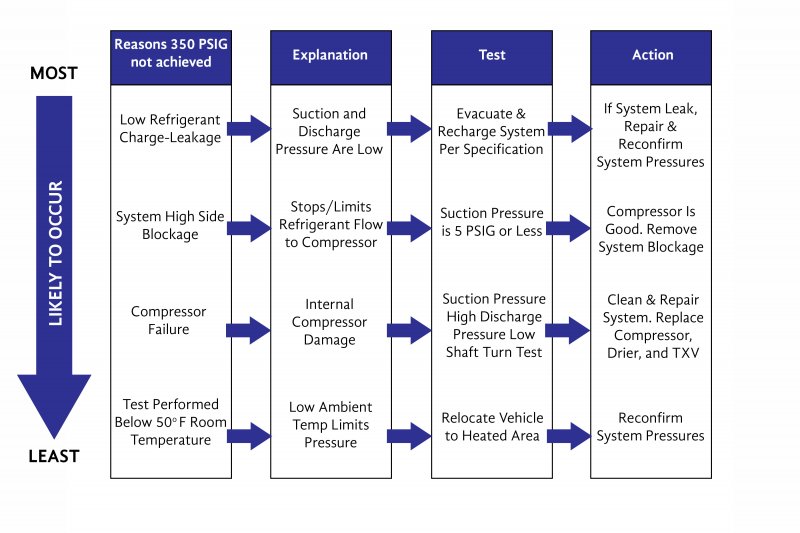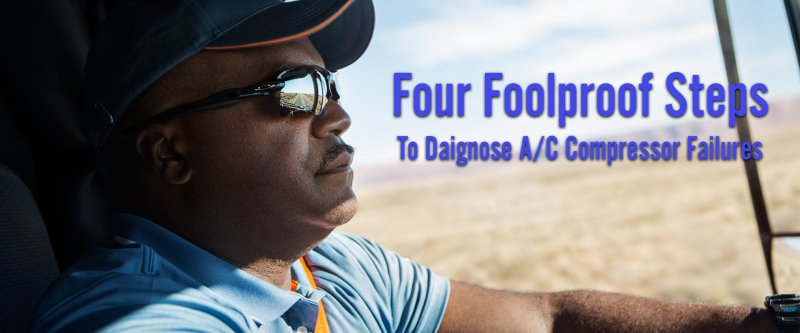Don't Sweat An A/C Compressor Failure
The time to diagnose a compressor is while it’s on the vehicle, and a failure can be determined by using a few simple steps. In many cases, compressors are removed due to low refrigerant or a blown fuse.
Step 1: Is compressor rotation smooth?
With vehicle off, turn the compressor shaft with a 14mm socket to check for smooth rotation. Grinding or hanging during shaft rotation is caused by broken components within the compressor.
Yes: continue with steps 2-4.
No: replace the compressor.
Step 2: Is field coil receiving greater than 11.5 volts?
This test should be conducted with the engine running and clutch engaged.
Yes: continue with steps 3-4.
No: check and correct the vehicle electrical system.
Step 3: Is field coil resistance between 2.8 and 4.4 ohms?
The coil resistance outside of this range will not engage or will cause fused circuits to open.
Yes: continue with step 4.
No: replace the compressor
Step 4: Is the compressor capable of producing 350 psig or more?
Excessive high pressures can be artificially produced by preventing air flow across the condenser, thus minimizing heat removal from the system. This can be best accomplished by disconnecting the fan switch/ relay, or simply blocking the condenser with a sheet of cardboard.
Yes: the compressor is functioning properly.
No: use the flow chart below.
If you're dealing with a compressor failure and need parts, we've got the inventory and speedy delivery to get you back on the road.





